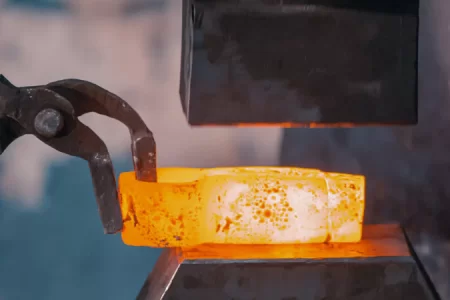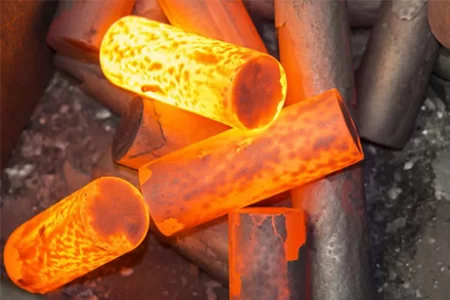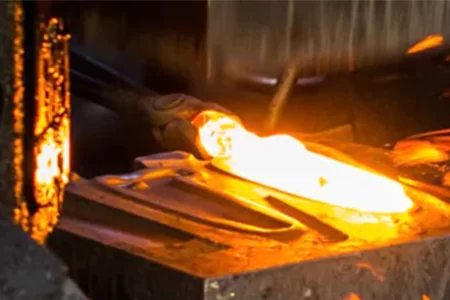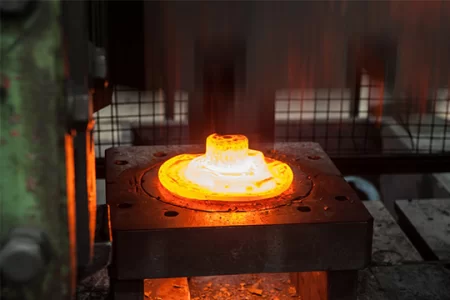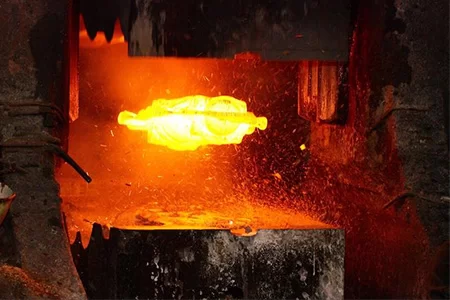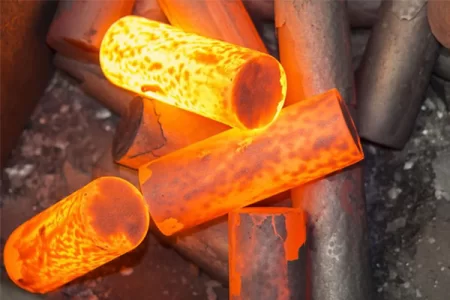By sharing knowledge, experience and views in the field of forging technology, we help you understand, learn and apply relevant technologies.

Hulk Metal Forging Technology
Share technical experience
-
Home>
-
Blog>
-
Technology>
Key Considerations for Closed Die Forging

As a precision metal processing process, closed die forging is widely used in many industries, especially in the production of parts requiring high strength and high precision. Compared with traditional open die forging, closed die forging can provide higher precision, better surface quality, and stronger part performance, so it has become the preferred process for many high-end industrial applications.
This article will conduct an in-depth analysis of closed die forging, explore its basic concepts, advantages, and challenges, and provide practical suggestions for selecting closed die forging processing factories. Finally, HULK Metal's advantages in this field will be introduced.
Basic concepts of closed die forging
Definition and working principle
Closed die forging is a processing method that applies pressure to metal materials through the closed state of the die. Unlike open die forging, the die in closed die forging is closed, and the metal billet is deformed under the restriction of the die and finally formed. This process can effectively control the flow direction and shape of the metal, thereby ensuring that the product has higher dimensional accuracy and better surface quality.
The basic working principle of closed die forging is to press the metal billet into the die through the pressure of the forging machine, and shape the metal material into the desired form through the shape change of the die. The design of the die determines the final shape, dimensional accuracy and surface quality of the forged part.
Common types of closed die forging
There are two main types of closed-die forging: hot forging and cold forging.
Hot forging: Hot forging is carried out in the heated state of the metal material. This method can significantly reduce the rheological stress of the metal, making it easier to deform. Hot forging is suitable for most metal materials, especially when producing large-size parts.
Cold forging: Cold forging is carried out at room temperature. Cold forging is usually used for the production of small-size, high-precision parts. Through cold forging, the strength and hardness of metal materials will be significantly improved, so it is widely used in the manufacture of precision parts.
Equipment and die types for closed die forging
Closed die forging is usually operated using large forging machines. Common equipment includes hydraulic forging machines, mechanical forging machines, and forging presses. The design of the die is crucial to the quality of the forged parts. The mold is usually made of high-strength steel and can withstand long-term use under high temperatures and high-pressure conditions.
Advantages of closed die forging
High precision
One of the biggest advantages of closed die forging is that it can achieve very high dimensional accuracy. Because the metal billet is subject to strict shape restrictions in the closed mold, the molded parts can often reach a size close to the final product. Especially when producing small precision parts, closed die forging can reduce the need for post-processing, thereby saving time and cost.
Strength and durability
Closed die forging can effectively control the direction and distribution of metal grains, optimize the performance of materials, and make forged parts have higher strength and durability. This makes closed die forging parts particularly suitable for applications requiring high strength and high fatigue life, such as aviation, automobiles, and energy equipment.
Efficiency
Compared with other processing methods, the closed die forging process can greatly improve production efficiency. Thanks to the precise design of the mold, closed die forging can form complex parts at one time, thereby reducing the time for multiple processing. Especially in mass production, closed die forging can effectively reduce production costs and improve production efficiency.
Disadvantages and Challenges of Closed Die Forging
High Cost
One of the disadvantages of closed die forging is the high cost. First, the design and manufacture of closed die forging molds require a high investment, especially in the production of complex parts, the mold cost will be higher. Second, the equipment price of closed die forging is relatively expensive, and for some small-batch production companies, the investment in closed die forging may not be cost-effective.
Applicability Limitation
Closed die forging has certain restrictions on the shape and size of parts. For parts with very complex or slender shapes, closed die forging may not fully meet the requirements. At this time, it may be necessary to combine other processing technologies such as casting or stamping to obtain the desired shape.
High Technical Requirements
Closed die forging is a process with high technical requirements and requires professional technicians to operate. In addition, the design and manufacture of molds also require high technical capabilities. Only factories with advanced technology and rich experience can carry out high-quality closed die forging production.
Key Factors of Closed Die Forging Process
Material Selection
The choice of materials is crucial to the quality of closed die forging. Different metal materials have different deformation capabilities after being stressed and heated. Common closed die forging materials include carbon steel, stainless steel, aluminum alloy, titanium alloy, etc. According to the application needs and performance requirements of the product, choosing the right material will directly affect the quality of the final product.
Temperature control
Temperature control is one of the key factors in closed die forging. For hot forging, the appropriate heating temperature can reduce the rheological stress of the metal and make the metal easier to deform. For cold forging, the metal is formed at room temperature and has higher strength. Therefore, accurate temperature control is essential for producing high-quality parts.
Pressure and forming speed
During the closed die forging process, pressure and forming speed also affect the quality of the final product. Too high or too low pressure will cause uneven metal flow, which will affect the accuracy and strength of the forging. Optimizing the forming speed helps to improve production efficiency and reduce die wear.
Quality control of closed die forging
Standards and methods of quality inspection
During the closed die forging process, quality control runs through the entire production process. Common quality inspection methods include dimensional measurement, hardness testing, mechanical properties testing, and surface defect detection. These tests can ensure that the forgings always meet the design requirements during the production process.
Common defects and avoidance methods
Common defects in closed die forging include cracks, pores, shrinkage holes, etc. These defects are usually caused by improper temperature control, excessive pressure or unreasonable mold design. In order to avoid these defects, it is necessary to strictly control the production process parameters to ensure that each link operates in the best condition.
Control measures for precision and surface quality
The precision and surface quality of closed die forging directly affect the performance and appearance of the product. By optimizing mold design, improving equipment precision and adopting advanced surface treatment technology, the precision and surface quality of forgings can be effectively improved.
Points to note when choosing a closed die forging OEM factory
Factory equipment and technical capabilities
When choosing a closed die forging OEM factory, the first thing to pay attention to is the factory's equipment and technical capabilities. The factory should have advanced forging equipment and professional technicians to ensure the production of high-quality closed die forging parts.
Production experience
Factories with rich closed die forging experience can better cope with complex process requirements and technical challenges. Choosing an experienced factory can more effectively improve production efficiency and product quality.
Mold design and manufacturing capabilities
Mold design and manufacturing are key links in closed die forging. Choosing a factory with strong mold design capabilities can ensure the accuracy and production efficiency of the mold and reduce production delays and cost increases caused by mold problems.
Quality control system
The degree of perfection of the quality control system is an important criterion for evaluating whether the supplier is reliable. A factory with a strict quality management and testing system can effectively ensure that every link in the production process meets quality requirements, reduces the defect rate, and ensures that the final product meets customer needs.
Customer service and responsiveness
A good customer service system can not only ensure the smooth progress of orders but also help solve any problems that may arise during the production process. Choosing a factory with fast customer service response and strong problem-handling capabilities will help ensure a smooth supply chain and on-time delivery of projects.
Cost and delivery time
When choosing a processing factory, cost and delivery time are two crucial factors. Although the cost of closed die forging is high, it is still necessary to compare prices among multiple factories to ensure that a reasonable price is obtained. The delivery time is directly related to production plans and market demand. It is particularly important to choose a factory with flexible production capabilities and timely delivery guarantees.
Why choose HULK Metal as your closed die forging supplier
HULK Metal has established a strong technical advantage in the industry with its years of hot forging experience and technical accumulation. We provide high-quality closed die forging parts, which are widely used in many industries such as construction, agriculture, and electricity. Here are a few key reasons to choose HULK Metal:
·Technical advantages: HULK Metal has advanced production equipment and a professional technical team to ensure that each batch of forgings meets high precision requirements.
·Rich experience: We have accumulated rich experience in the field of closed die forging and are able to handle complex production processes to meet the diverse needs of customers.
·Strict quality control: HULK Metal strictly follows ISO 9001 standards for quality management to ensure that each product is strictly tested and meets international quality standards.
·Customized service: According to customer needs, HULK Metal provides personalized closed die forging solutions to meet the special requirements of different customers.
·Customer first: We focus on long-term cooperative relationships with customers, provide efficient communication and after-sales service, and ensure that customers get the best experience throughout the cooperation process.
As an advanced metal processing process, closed die forging plays a vital role in multiple industries with its high precision, high strength, and high efficiency. Through an in-depth understanding of the closed die forging process and choosing the right OEM factory, the advantages of this process can be maximized to produce high-quality parts that meet the needs.
When choosing a closed die forging OEM factory, it is important to pay attention to factors such as equipment and technical capabilities, production experience, quality control system, and customer service. With its strong technical support and rich experience, HULK Metal is able to provide customers with high-quality and high-performance closed die forging solutions to help customers gain an advantage in the fierce market competition.
Contact us to learn more about our hot forging services!
Article Navigation
Article Navigation
Foundries
-

July.01, 2024
Difference between hot forging and cold forging
READ MORE
-

June.27, 2024
What are the advantages and disadvantages of the hot forging process?
READ MORE
-

January.18, 2024
Forging: What Is It? What Are The Different Types of Hot Forging?
READ MORE
-

February.07, 2025
About HULK Metal Hot Forging
READ MORE
-

January.23, 2025
The difference between forging and casting
READ MORE
-

January.17, 2025
Factors to Consider During Hot Forging Process
READ MORE
-

January.17, 2025
Maintenance of forging dies: ensuring forging life and efficiency
READ MORE



